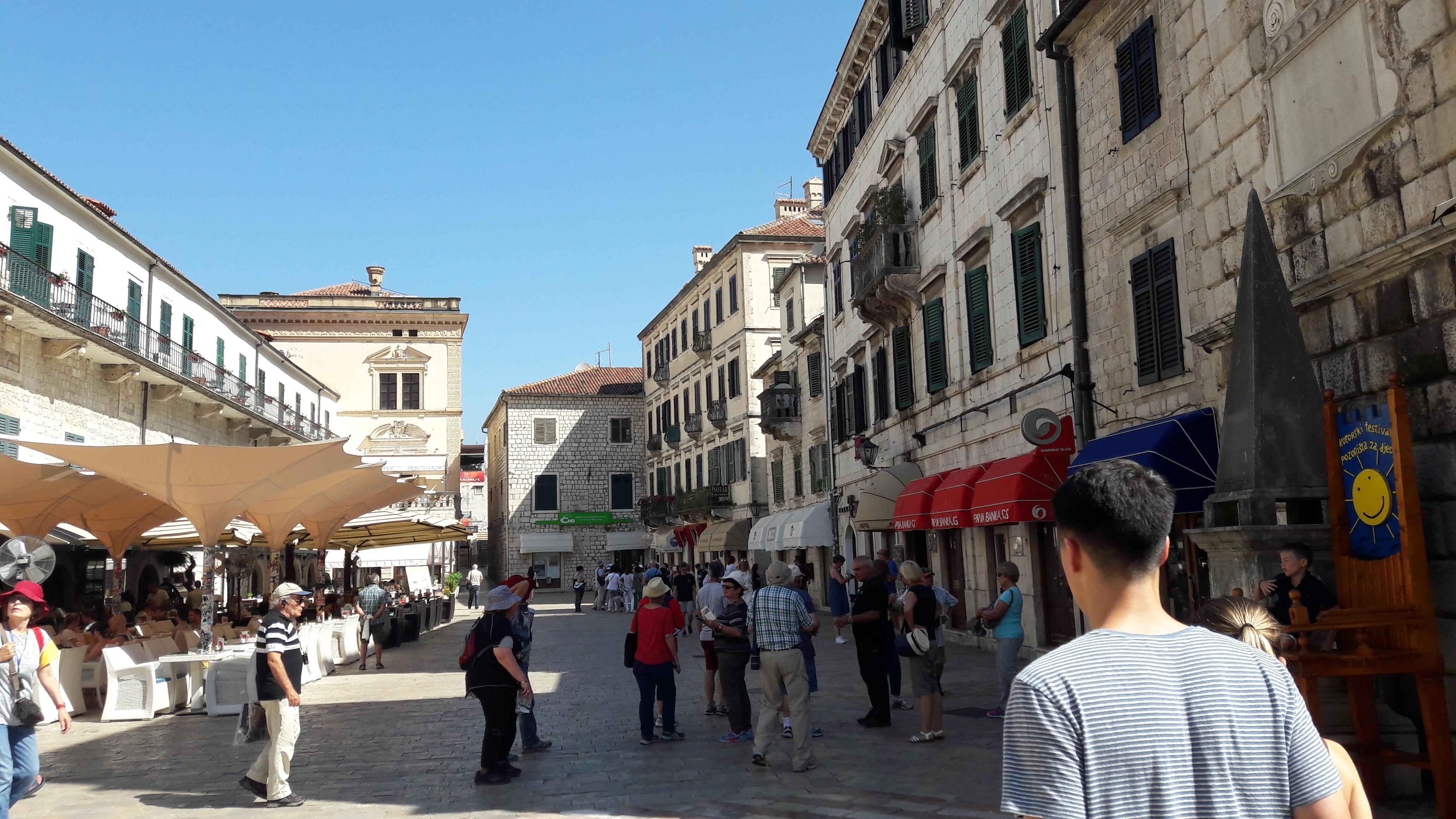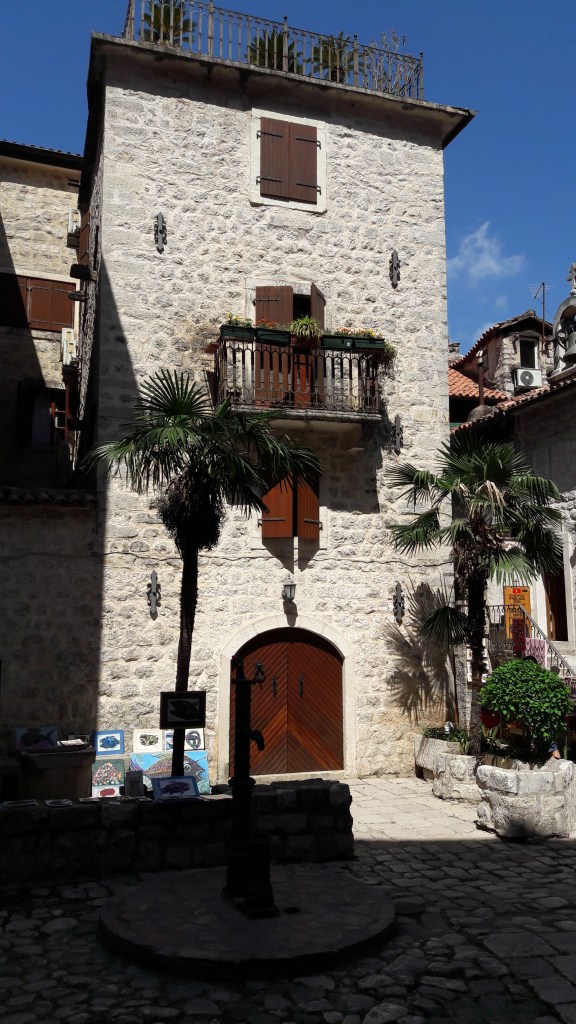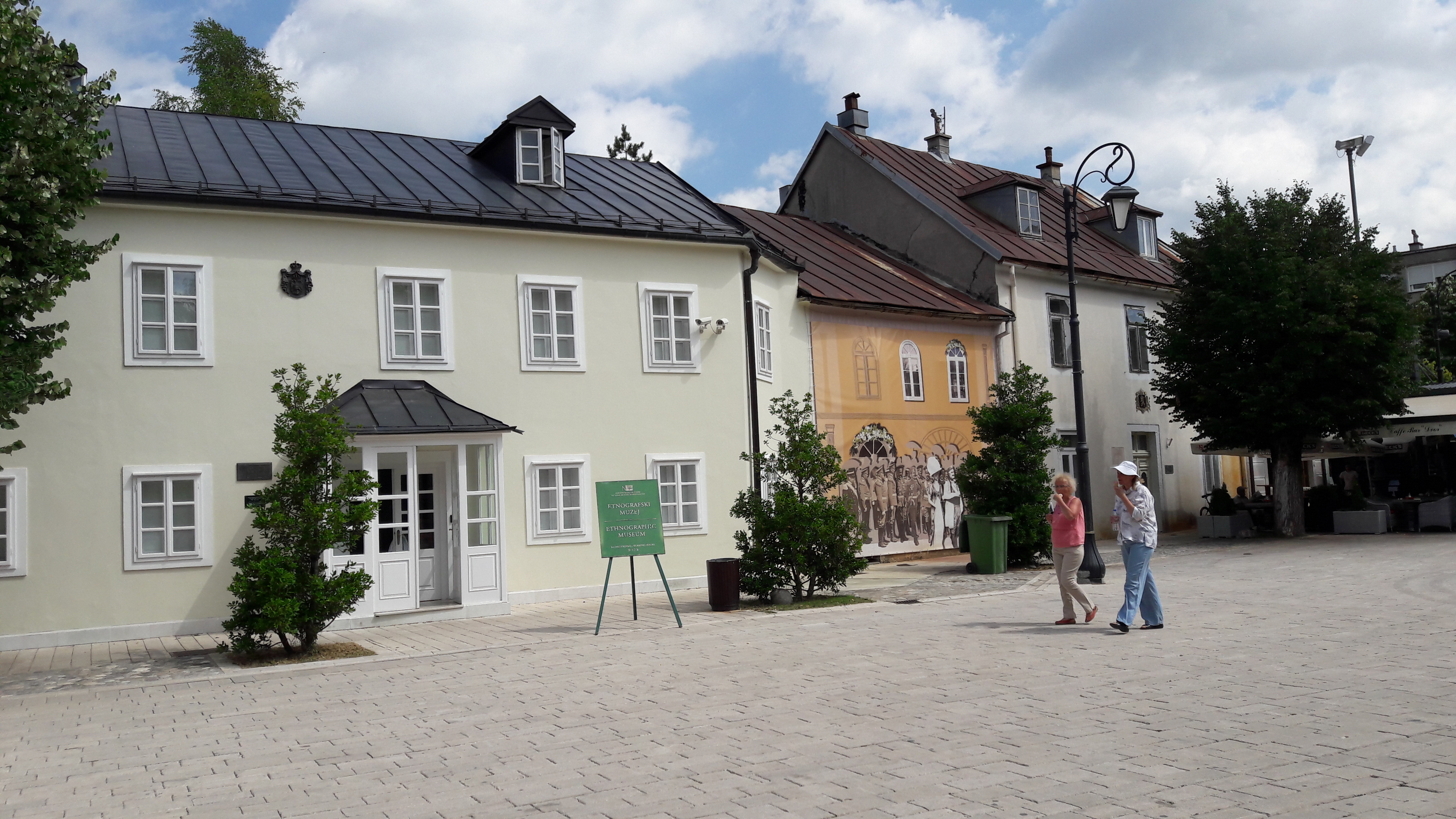In my Montenegro’s Buvda Riviera post I wrote about the towns and villages located along the Adriatic coast of northern Montenegro. Much as I adore the concept of sun, sand and sea I like to sprinkle a little culture and history into beach holidays as well. The most popular day trips from Budva and the surrounding Riviera are to the picturesque fortified town of Kotor and to the former Montenegrin capital, Cetinje.
For more information on Montenegro, check out my Montenegro Travel Blog post.
Kotor
If you type ‘Montenegro’ into Google Images chances are the results will show a red-roofed town overlooking what appears to be a fjord. This is Kotor and the fjord-like landscape is the spectacular Bay of Kotor, a body of water which has towns and villages dotted along the shore. The Bay of Kotor is separated from the Adriatic Sea by the Bay of Tivat and the Bay of Herceg Novi.

From the 15th century to the 18th century Kotor was part of the Venetian Empire. The similarities between it and other former Venetian towns along the Balkan Adriatic is strong and, like Dubrovnik Old Town, Kotor Old Town is a UNESCO World Heritage Site.

After parking the car (more on that later), I headed straight for the Old Town which is the main draw for tourists. Meandering its maze of cobbled streets, stopping for the occasional ice-cream and/or coffee and/or pastry was a both an education on its history and an agreeable way to spend a few hours. Outside the Old Town a large market was selling a variety of foods, with fruit and vegetables the main commodities. The outer fortified walls of the Old Town are impressive and are surrounded by a moat.

Kotor’s deep harbour has been its blessing for centuries, both facilitating trade and a naval fleet. Nowadays, it appears to be its curse as large cruise ships dock there and disgorge thousands of passengers. The town isn’t big enough to absorb this type of tourism and with mountains surrounding the town on three sides there is little, if any, space for further expansion of Kotor’s urban area.
Saying that, the easiest way of accessing Kotor is by boat as part of a Kotor Bay day trip. A public bus from Budva is an environmentally-friendly and stress-free access method as well, with the bus station located approximately 5 – 10 minutes’ walk south of the Old Town.

Unless you aim to be in Kotor early, I don’t recommend travelling there by car. A tunnel under the mountain from the Tivat Airport junction leads directly into both Kotor and traffic jams. Even at 9.30am I waited forty minutes for a car parking space and enviously ogled the super yachts in the marina and their prime central position.
Bringing your own transport to Kotor means you can get that iconic shot of Kotor Bay from the top of Lovćen Mountain. It does, however, mean travelling on the insane road that is the Ladder of Cattaro.
Cetinje
Cetinje was founded in the 15th century and has been Montenegro’s spiritual and royal capital since then. The Prince-Bishop rulers of Montenegro were based in Cetinje and, in the 19th century, other European powers recognised Cetinje as the capital and began basing their embassies there. When Montenegro’s capital was moved to Podgorica in the 20th century the embassies closed. However, Cetinje’s Blue Palace is still the official residence of the President of Montenegro.

The former embassies are well preserved and now have different purposes. The burgundy-coloured British Embassy is now a music school. The Serbian Embassy is now the Ethnographic Museum. The National Museum of Montenegro is based in what was Government House.



Cetinje’s relaxed pace was a welcome relief from the bustle and chaos of the Budva Riviera. Getting to Cetinje by car from Budva was anything but stress-free. In keeping with Montenegro’s mountainous and beautiful landscape the road was one hairpin bend followed by another ascending to a height of 2,800 feet. The automatic car was a godsend as I could focus on keeping the car on the road as opposed to changing gears.

The scariest part was driving towards Cetinje as the fall into the valley is on the right-hand side of the road. Apart from a section with road works (and no crash barrier), the road surface was in excellent condition. Despite the white knuckles and sweaty palms, I highly recommend the Budva to Cetinje road to motor enthusiasts and those who enjoy a mechanical challenge with great scenery.

GETTING TO KOTOR AND CETINJE
I travelled to Kotor and Cetinje by rental car. It’s possible to do both trips by public bus from Budva. Bus fares in Montenegro are very reasonably priced. The GetbyBus website is an excellent resource for bus timetables and prices in Montenegro.
If you have other recommendations for day trips from Budva then please leave a comment below.
